26 Best Things to Do in Nagasaki
Nagasaki is a city with a complex history, having faced tremendous tragedy as the second city destroyed by an atomic bomb in World War II. Yet like a phoenix rising from the ashes, Nagasaki has transformed into a thriving, vibrant destination full of beauty, culture, and resilience.
This coastal city on Japan’s Kyushu Island is home to stunning scenery, poignant landmarks, and warm hospitality that welcomes visitors to immerse themselves in its storied past and dynamic present.
Get ready to be transported on an unforgettable journey through Nagasaki’s top sites – from its iconic Peace Park and Atomic Bomb Museum to majestic Mount Inasa, sensational food scene, and more. This comprehensive guide will highlight the 26 must-see attractions to fully experience the spirit of Nagasaki.
1. Nagasaki Peace Park
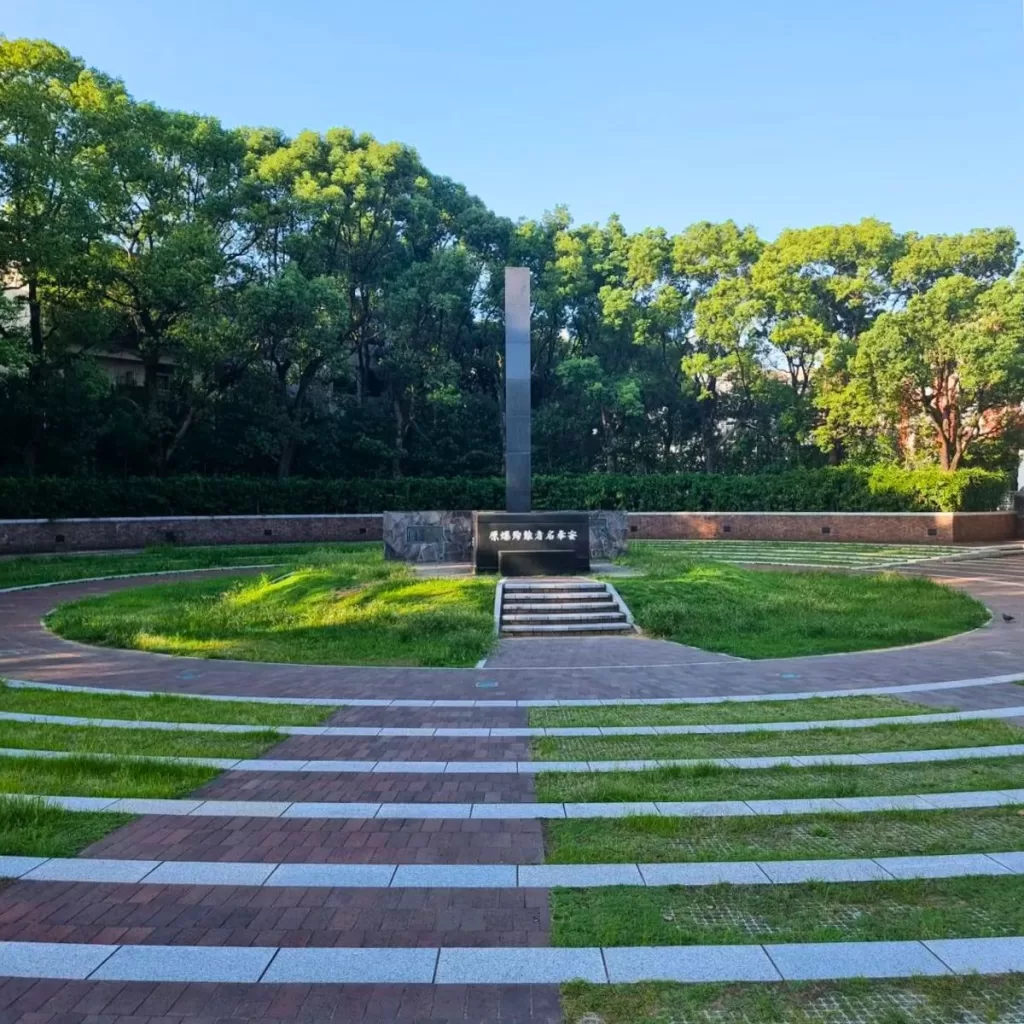
One of the best things to do in Nagasaki city is to visit the Nagasaki Peace Park. The Nagasaki Peace Park commemorates the atomic bombing of Nagasaki city on August 9, 1945. It houses the Nagasaki Peace Memorial Hall, the Peace Fountain, and the iconic Peace Statue. It is a sobering place to reflect on the devastation of nuclear weapons.
It is one of the world’s most significant historical sites and a testament to the enduring human spirit. Built to honor the memory of the victims of the atomic bomb and promote a peaceful future, the park encompasses various memorials, statues, and exhibits that educate visitors about the tragic event and its aftermath.
As one of the world’s best sightseeing spots, Nagasaki Peace Park offers a powerful and emotional experience. Visiting Nagasaki Peace Park is an essential part of Japan travel for anyone interested in history and humanity’s quest for peace. It provides a solemn reflection on the devastating consequences of war and serves as a poignant reminder of the importance of striving for a world free from nuclear weapons. The park’s serene atmosphere and beautifully landscaped gardens also offer a peaceful respite from the bustling city.
2. Nagasaki Atomic Bomb Museum
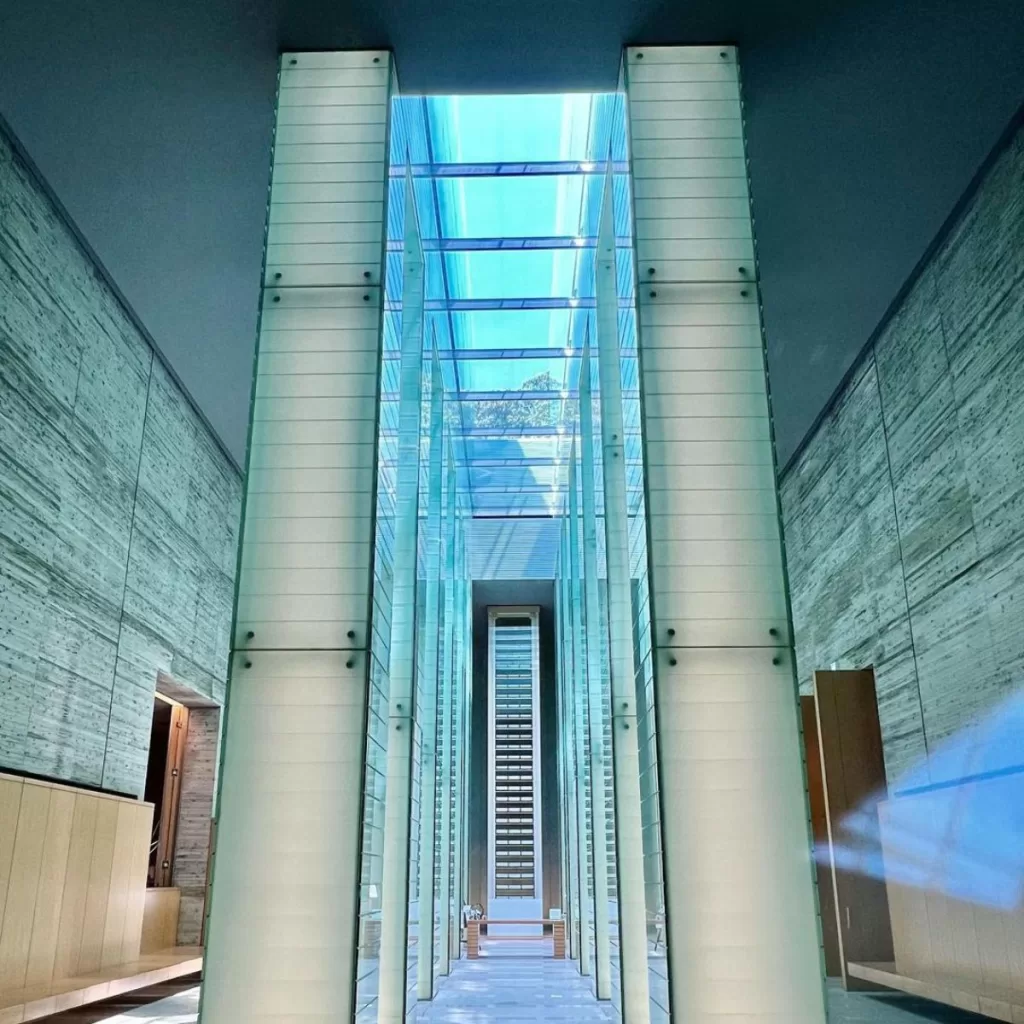
When coming to Nagasaki, one of the must-visit attractions is the Nagasaki Atomic Bomb Museum. This museum documents the terror of the atomic bombing through photographs, artifacts, and survivor testimonies. An intensely emotional experience, it highlights the human toll of nuclear warfare.
Visiting the Nagasaki Atomic Bomb Museum offers a somber and reflective experience. It serves as a place to visit to pay respects to the victims and to learn about the importance of peace and nuclear disarmament.
The museum’s exhibits provide a sobering understanding of the catastrophic consequences of nuclear warfare and serve as a powerful reminder of the need to strive for a world free of nuclear weapons.
The Nagasaki Atomic Bomb Museum is particularly significant as it is located close to the hypocenter, the point directly below where the bomb was dropped. This proximity adds to the authenticity and gravity of the museum’s exhibits. Visitors can witness firsthand the tangible impact of the bomb on the city, as well as the strength and resilience of the people who rebuilt their lives in the aftermath.
3. Nagasaki National Peace Memorial Hall for the Atomic Bomb Victims

When exploring the city of Nagasaki, one of the best places to visit is the Nagasaki National Peace Memorial Hall for the Atomic Bomb Victims. This solemn memorial stands as a testament to the lives lost and the suffering endured during the atomic bombing of Nagasaki in World War II. It is a place of remembrance and healing, providing visitors with a deeper understanding of the tragic events that unfolded in the city.
Built by the Japanese government, this memorial hall underlines the catastrophic aftermath of the bombing. It contains over 150,000 names of atomic bomb victims.
As one of the notable attractions in Nagasaki, the Nagasaki National Peace Memorial Hall offers a somber and reflective experience. The memorial hall provides a comprehensive look into the lives of those affected by the bombing through exhibits, personal stories, and archival materials. It serves as a poignant reminder of the human toll of war and the importance of working towards world peace and reconciliation.
4. Dejima
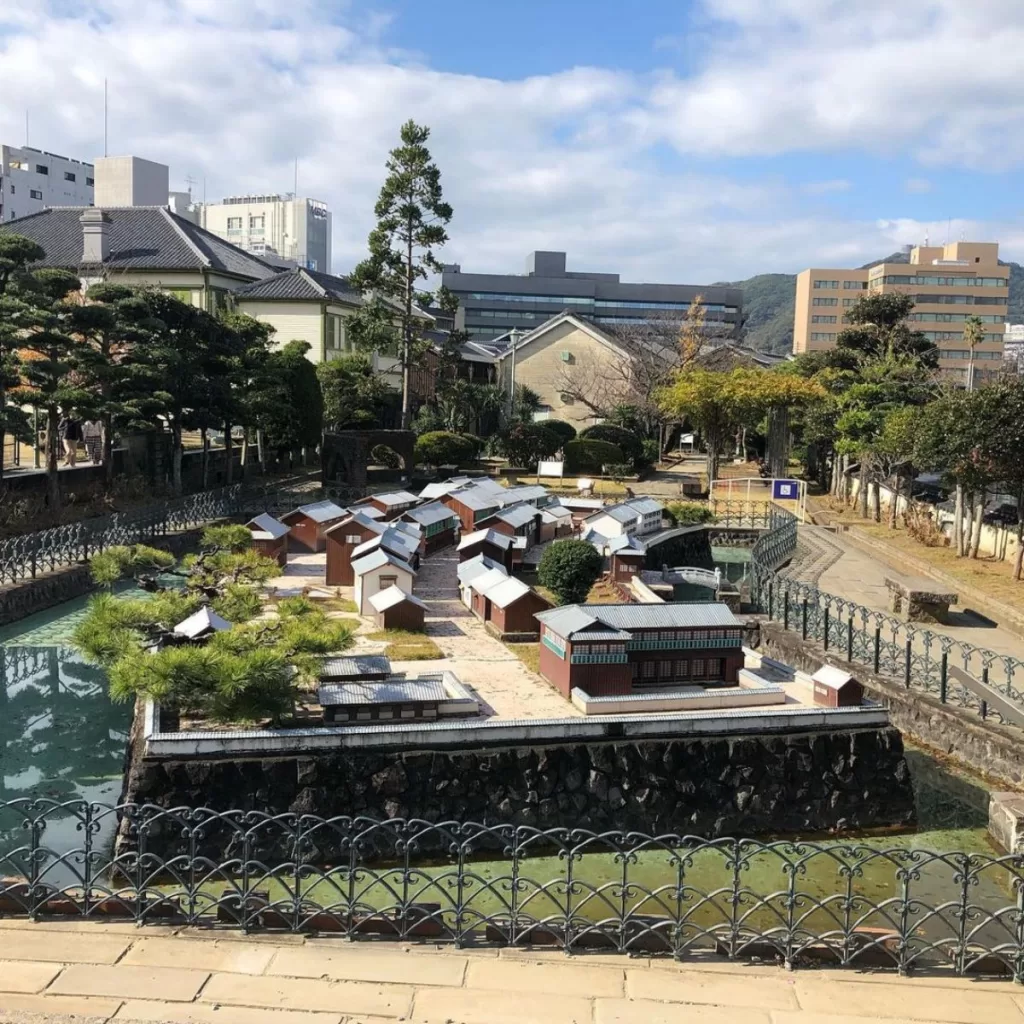
One of the most popular Nagasaki attractions to visit is Dejima. Once an artificial island in Nagasaki harbor, Dejima was a trading post where Japanese and foreign merchants exchanged wares for 200 years. An excavated Dejima recreates this unique crossroads.
Visiting Dejima offers a unique glimpse into Japan’s past and its connection to the global trade networks of the time. The island was a bustling hub of cultural exchange and commerce, particularly with the Dutch, who were the only Westerners allowed to trade with Japan during this period.
Exploring the restored buildings and exhibits in Dejima allows visitors to immerse themselves in the rich history and experience the atmosphere of a trading port from centuries ago.
5. Glover Garden

One of the must-visit attractions in and around Nagasaki is the enchanting Glover Garden. Named after Thomas Glover, a Scottish merchant who played a pivotal role in Japan’s industrialization, this picturesque hillside garden offers a serene escape from the bustling city. Nestled on a hill overlooking Nagasaki Bay, Glover Garden is a delightful blend of Western architecture, lush greenery, and stunning panoramic views.
Glover Garden has several Western-style mansions from Nagasaki’s era as a foreign trade port. The former homes of British merchants now contain exhibits on Nagasaki’s diverse history.
Visitors can wander through the well-manicured gardens, admiring the intricate architecture and learning about the lives and contributions of the individuals who once resided in these elegant homes.
Glover Garden is also well-known for its panoramic observation deck, providing visitors with breathtaking views of Nagasaki and its harbor. Whether gazing at the city below or admiring the sunset over the bay, this vantage point offers a spellbinding experience and is often considered one of the best viewpoints in Nagasaki.
6. Inasayama Observation Deck

At the top of Mt. Inasa, the observation deck has panoramic views of Nagasaki harbor. The glittering nighttime vista has earned it a spot as one of Japan’s three best night views.
Ascending to the Inasa Observation Deck provides visitors with a bird’s-eye view of Nagasaki that is nothing short of spectacular. From this vantage point, one can admire the sprawling cityscape, the mesmerizing Nagasaki Bay, and the majestic mountains that embrace the region.
Whether it’s in the daytime when the city pulses with life or at night when the shimmering lights create a magical ambiance, the view from the observation deck is truly awe-inspiring.
7. Spectacles Bridge
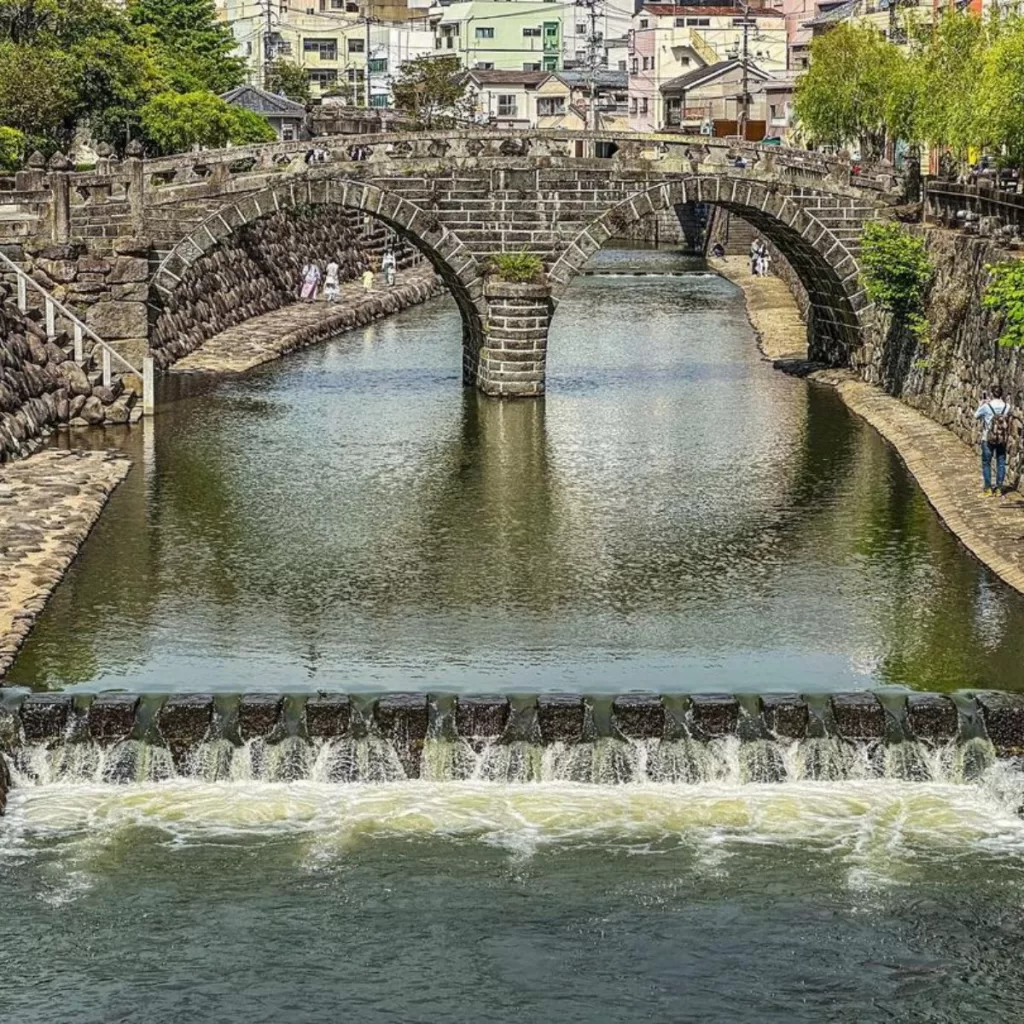
One of the iconic landmarks in Nagasaki is the Spectacles Bridge, also known as Meganebashi. This charming stone bridge, adorned with unique arches resembling a pair of spectacles, holds historical and cultural significance in the city. Located in the heart of the historical district of Nagasaki, it is a popular spot for locals and tourists alike.
This double-arch bridge is dramatically lit up at night. The bridge towers over the Nakashima River and is considered one of Nagasaki’s top nighttime attractions. Its location in the historical district allows visitors to explore the nearby traditional houses and shops, offering a glimpse of life during the Edo period.
Aside from its historical and architectural significance, the Spectacles Bridge has also become a symbol of good luck and romance. It is believed that crossing the bridge hand-in-hand with a loved one brings luck and strengthens the bond between couples. As a result, the bridge has become a popular spot for couples and a frequent fixture in wedding photoshoots.
8. Peace Statue
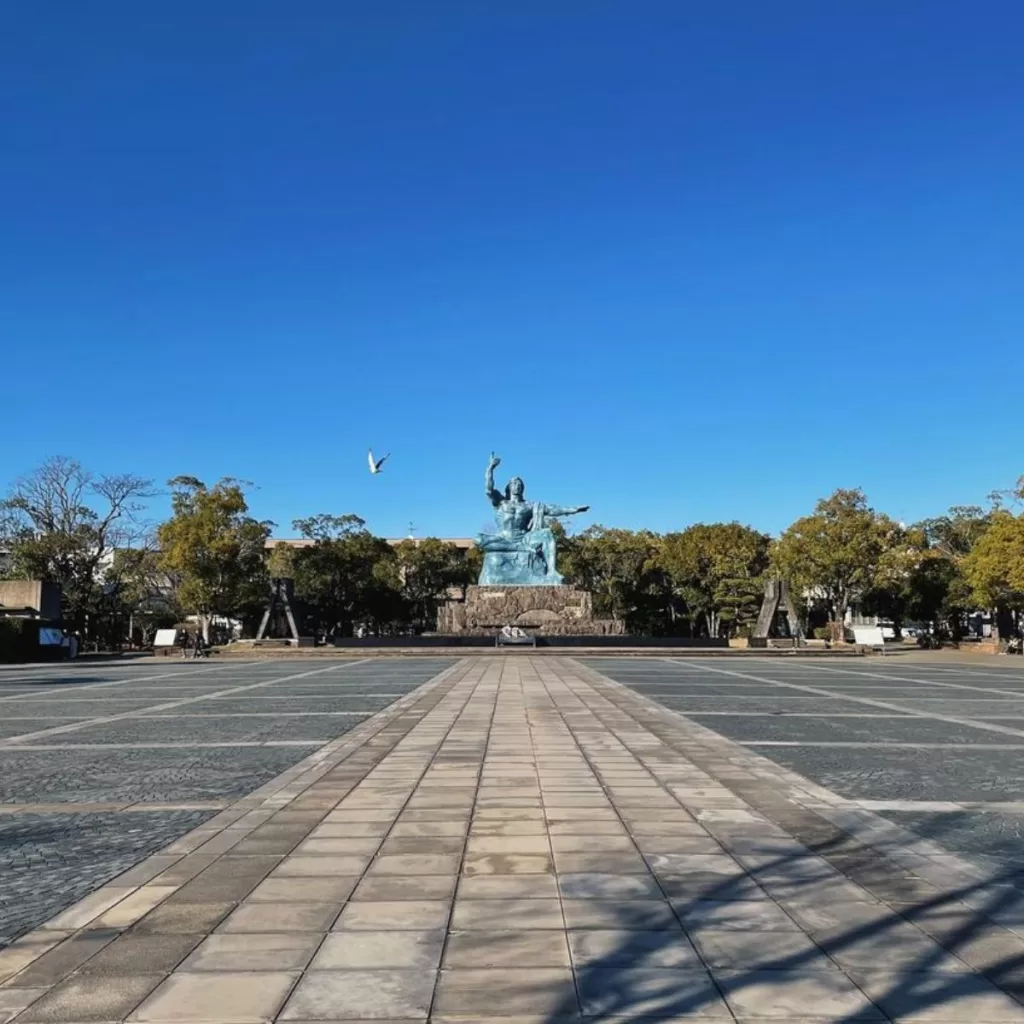
One of the standout features of the Peace Statue is the right hand, pointing towards the sky. This gesture signifies the desire for nuclear disarmament and the aspiration for a world where nuclear weapons are no longer a threat to humanity. The raised left hand, with an open palm, symbolizes both the need for reconciliation and peace while also offering prayers for the souls of the atomic bomb victims.
Visiting the Peace Statue is a deeply moving and emotional experience. The statue stands in the Peace Park, a serene and contemplative space where visitors can reflect upon the horrors of the atomic bombing and pay their respects to the victims.
9. Suwa Shrine
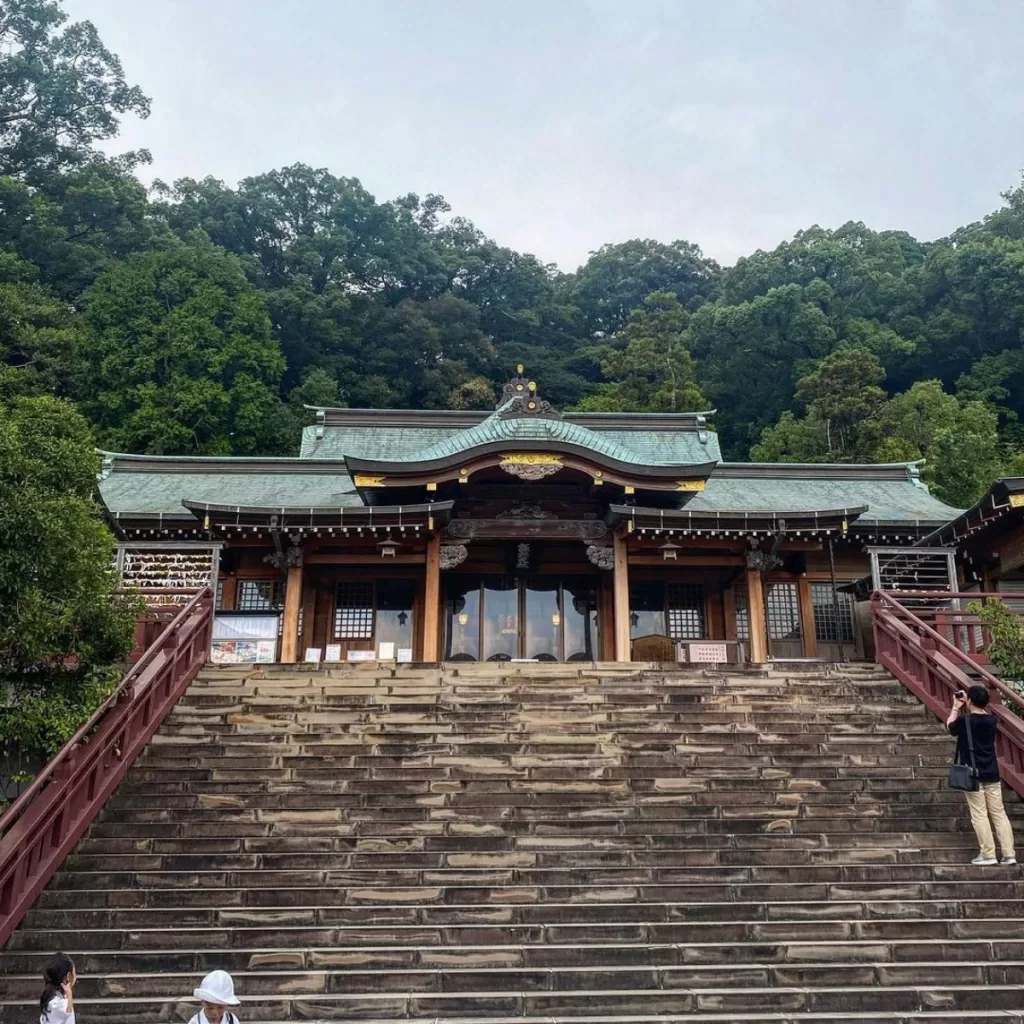
Founded in 1625, this shrine has a commanding hilltop location with scenic views. Its red-painted halls and striking vermillion torii gate make a vivid impression.
This ancient Shinto shrine dates back over a thousand years and holds immense significance in the region. From its sacred grounds to its vibrant festivals, Suwa Shrine captivates visitors with its serene ambiance and rich cultural tapestry.
Suwa Shrine is dedicated to Suwa-no-Kami, a Shinto deity believed to protect the city and its people. The main hall of the shrine, known as Honden, is an architectural masterpiece featuring intricate carvings and traditional craftsmanship. Visitors can pay their respects at the Honden and experience a sense of tranquility in the presence of the deity.
10. Sofuku-ji
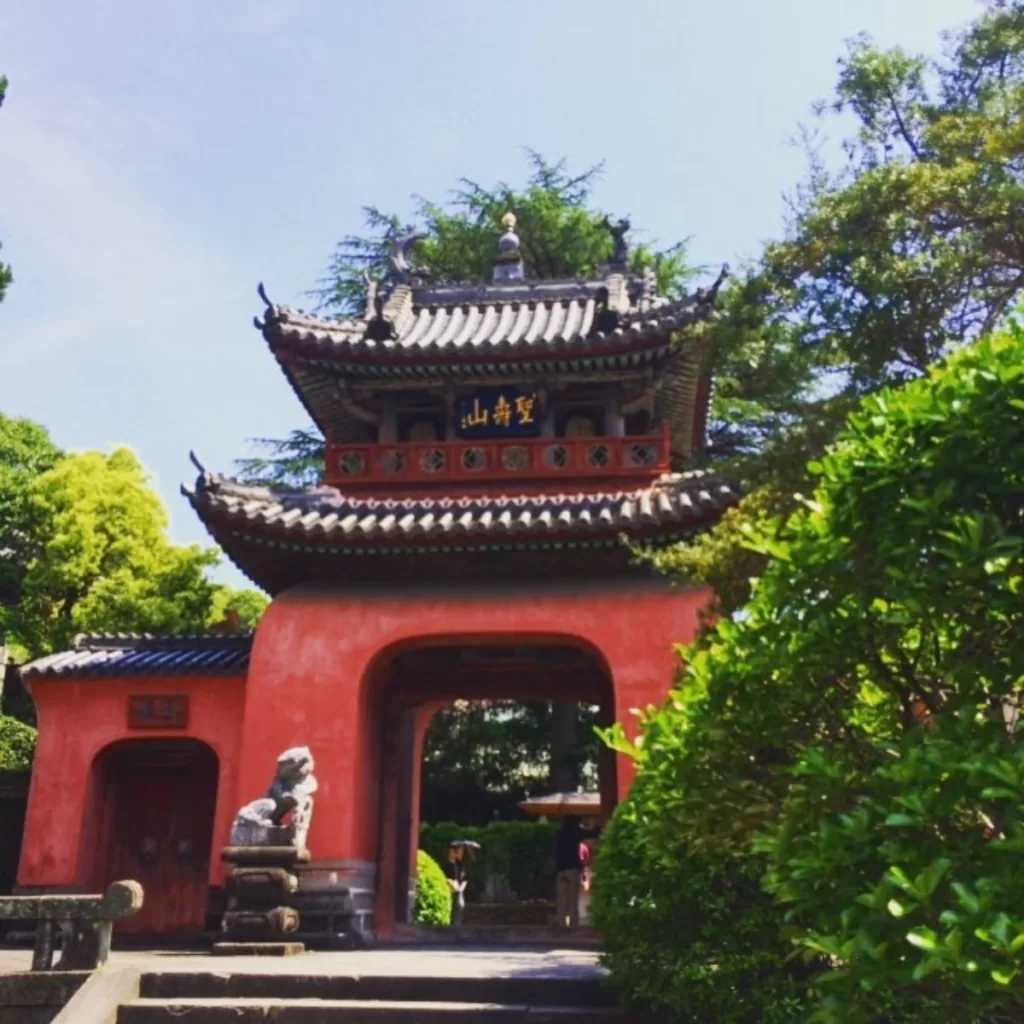
Nestled in the heart of Nagasaki, Sofuku-ji is a serene and culturally significant temple that offers a captivating window into the history and influence of Chinese culture on the city.
Established in the 17th century by Chinese residents, Sofuku-ji holds the distinction of being the oldest Chinese temple in Japan. Its rich architectural design and vibrant cultural elements make it a must-visit attraction for those seeking to explore Nagasaki’s multicultural past.
As visitors step through its ornate entrance gate, they are transported into a world that seamlessly blends Chinese and Japanese architectural styles. The temple complex boasts stunning structures adorned with intricate colorful designs, elaborate roof details, and traditional Chinese motifs. The masterful craftsmanship and attention to detail are a testament to the cultural exchange between China and Japan during the Edo period.
11. Nagasaki Penguin Aquarium
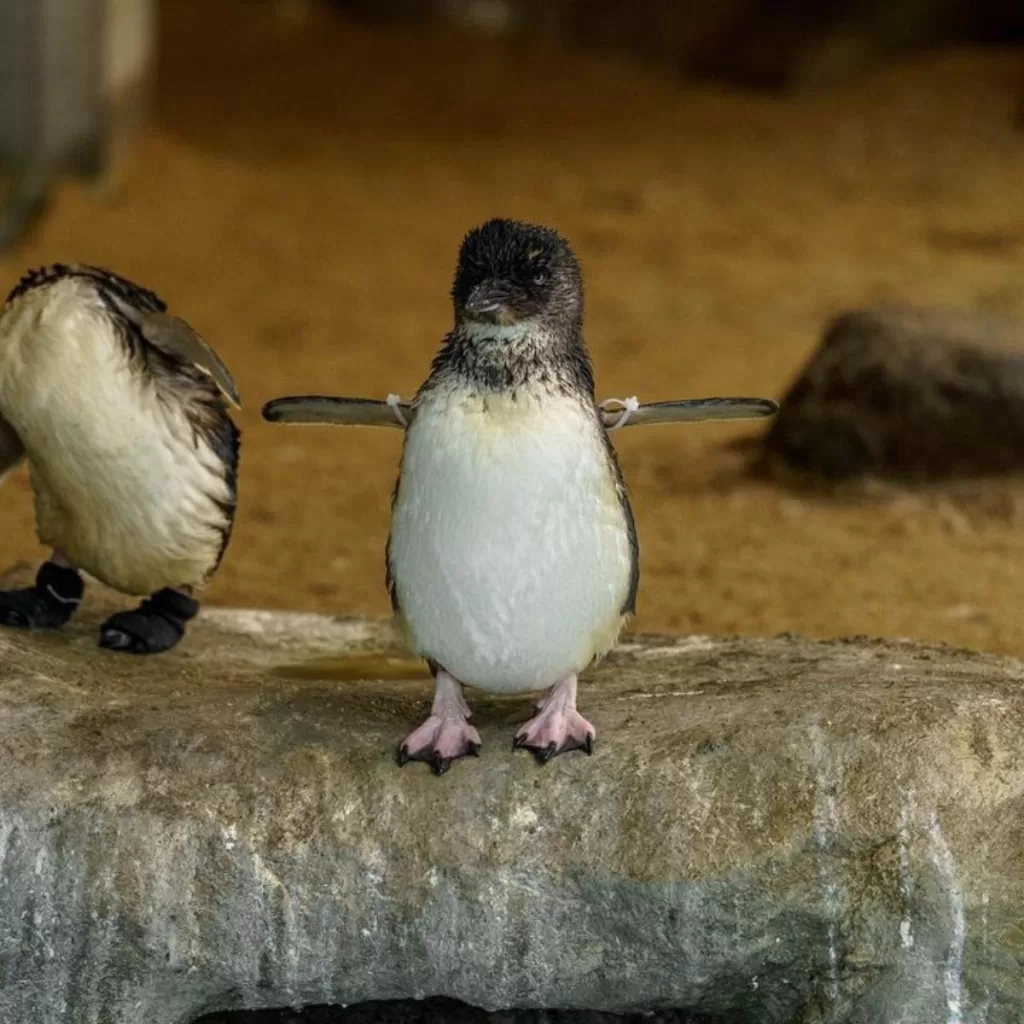
Situated in the vibrant city of Nagasaki, the Nagasaki Penguin Aquarium beckons visitors to embark on a captivating journey into the enchanting underwater world. This renowned aquarium provides a thrilling experience for all ages, boasting a diverse collection of penguins, marine creatures, and interactive exhibits that offer an up-close and personal encounter with the wonders of the ocean.
Home to around 120 Humbolt penguins, this aquarium lets you observe the adorable birds up close through glass tunnels. An aquatic family-friendly attraction.
To enhance the immersive experience, the Nagasaki Penguin Aquarium also offers scheduled feeding sessions and interactive shows that showcase the intelligence and agility of marine animals. These performances provide both entertainment and education, shedding light on the incredible abilities of dolphins, seals, and other marine species.
12. Nagasaki Museum of History and Culture
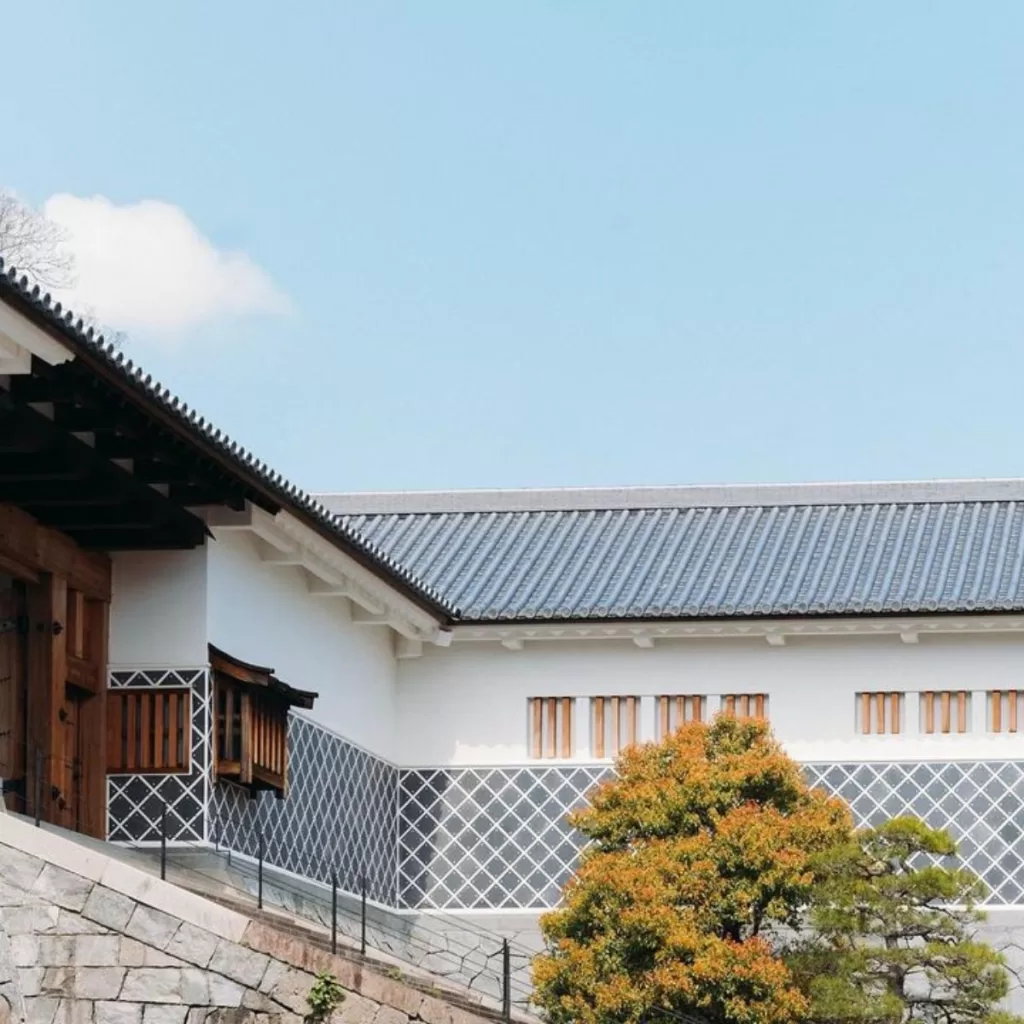
Located in the heart of Nagasaki, the Nagasaki Museum of History and Culture offers a captivating journey through time, unveiling the city’s rich past and cultural heritage. This extensive museum traces Nagasaki’s past as a center of international trade. Exhibits feature archeological artifacts, art, and historical archives.
The museum is divided into multiple sections, each focusing on a different era in Nagasaki’s history. From the early influences of foreign traders in the 16th century to the devastating atomic bombing during World War II, the museum chronicles the city’s triumphs, challenges, and resilience throughout the centuries.
Visitors can explore meticulously curated galleries that showcase archaeological finds, historical documents, and artworks, offering a deeper insight into Nagasaki’s unique position as a center of global trade and cultural fusion.
13. Twenty-Six Martyrs Museum and Monument
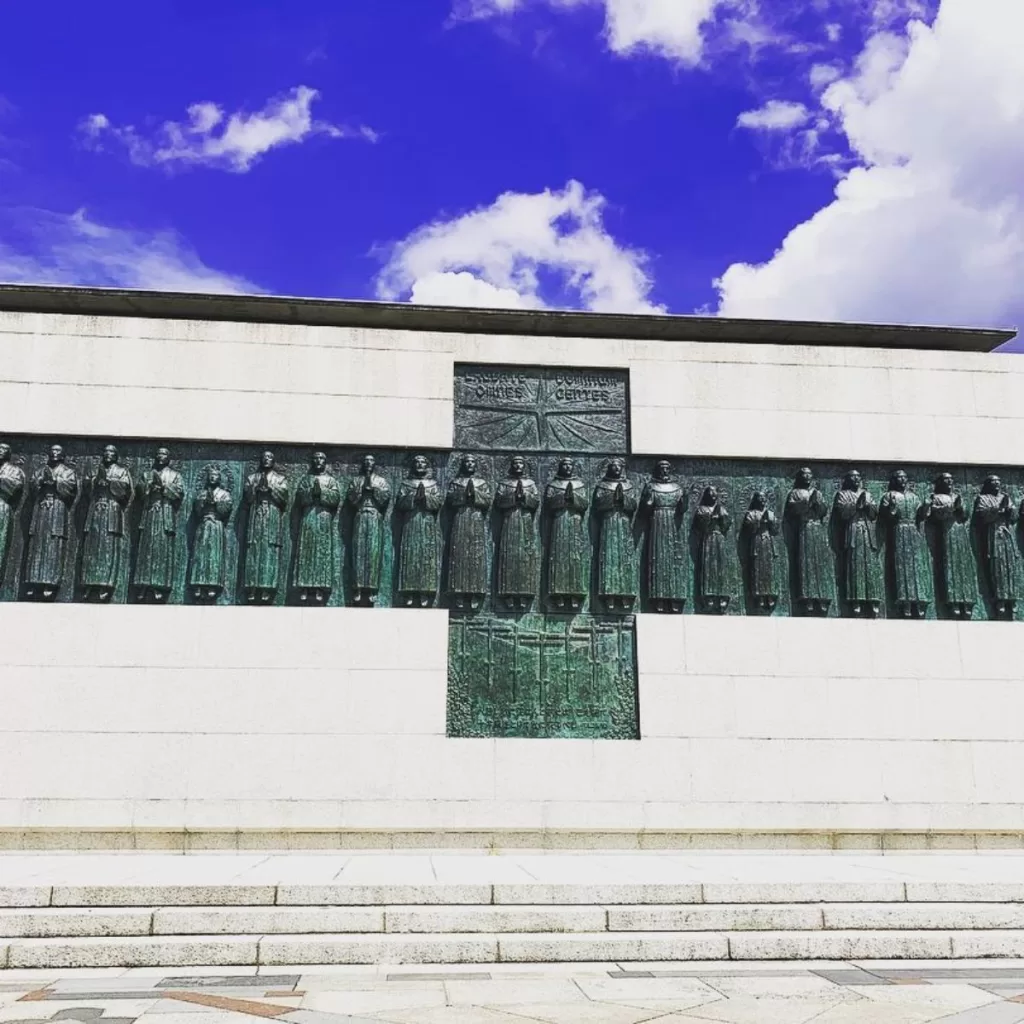
This memorial honors 26 Christians who were crucified in 1597 at this site during persecution. An important relic of Japan’s ban on Christianity.
The museum houses a comprehensive collection that tells the story of the Christian mission in Japan at that time and the subsequent persecution. Through carefully curated exhibits, visitors can learn about the arrival of Christianity in Japan, its rapid growth, and the challenges faced by those who embraced the faith. The museum provides historical context, insights into the lives of the martyrs, and the ultimate sacrifice they made for their beliefs.
The centerpiece of the museum is the 26 Martyrs Monument, an imposing structure that stands as a symbol of remembrance and reverence. The monument features individual statues of each martyr, representing their courage and unwavering faith. Surrounding the monument is a peaceful garden that offers a space for reflection and contemplation. Visitors can pay their respects and honor the memory of the martyrs while surrounded by the tranquil beauty of the surroundings.
14. Oura Cathedral
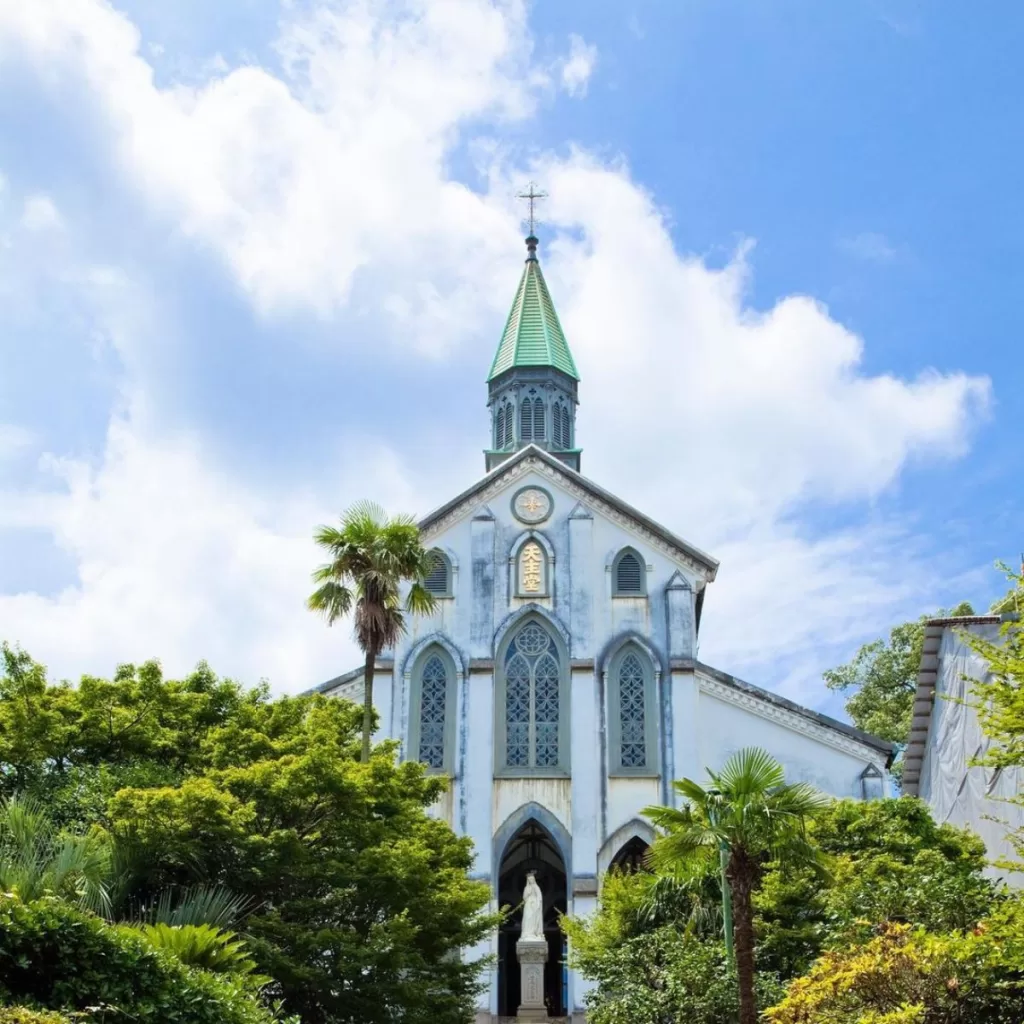
Oura Cathedral, located in Nagasaki, is a treasured symbol of faith, resilience, and the enduring spirit of the Christian community in Japan. Built in the late 19th century, it is the oldest surviving wooden church in the country and has been designated as a National Treasure. The cathedral’s distinct Western architectural style, combined with its historical and cultural significance, make it a must-visit attraction for both religious devotees and admirers of architectural beauty.
The exterior of Oura Cathedral is characterized by its elegant blend of Western and Eastern architectural elements. The brick facade, towering spires, and intricate stained glass windows create a striking visual impression. Inside, visitors are greeted by a serene and awe-inspiring interior adorned with religious iconography, ornate altar pieces, and beautiful murals. The cathedral exudes an atmosphere of tranquility and spiritual devotion.
Today, Oura Cathedral continues to play an active role in the Christian community. Regular services are held, and the cathedral welcomes visitors of all faiths to explore its rich history and religious significance. It serves as a place of pilgrimage, a sanctuary for prayer and reflection, and a symbol of hope and unity in Nagasaki.
15. Nagasaki Chinatown

Nestled in the heart of Nagasaki city, Nagasaki Chinatown, also known as Nagasaki Shinchi Chinatown, is a vibrant and bustling district that provides a glimpse into the rich history, culture, and culinary delights of the Chinese community in Japan.
Nagasaki’s Chinatown reflects the city’s multicultural heritage. Chinese restaurants and shops selling spices and Chinese wares give this district its lively ambiance.
Nagasaki’s Chinatown dates back to the 17th century when Chinese traders settled in the port city. Over the centuries, it has grown into a thriving cultural hub, a melting pot of Chinese and Japanese traditions. As you step into the district, you’ll be greeted by colorful gates adorned with intricate dragons, lantern-lined streets, and a lively atmosphere that immerses you in the vibrant Chinese culture.
16. Nagasaki Ropeway

Take a scenic ride up Mt. Inasa on this cable car line. The 828 meter long route affords breathtaking views of Nagasaki harbor and the city skyline.
The Nagasaki Ropeway, a popular tourist attraction in Nagasaki, offers visitors a breathtaking way to experience the beauty of the city from above. Spanning over a kilometer in length, the ropeway transports passengers to the scenic heights of Mount Inasa, where panoramic views of Nagasaki Bay, the surrounding mountains, and the cityscape await.
17. Nagasaki Wharf
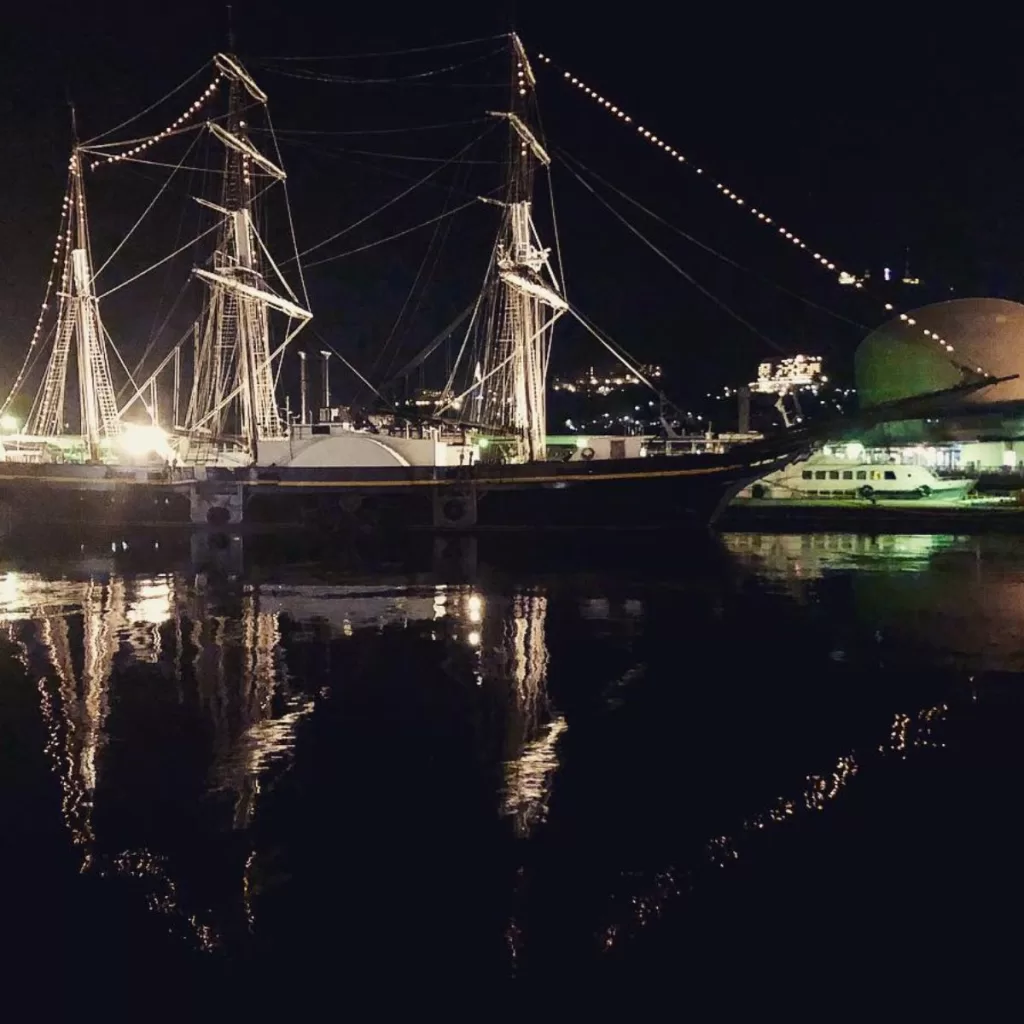
Nagasaki Wharf, situated along Nagasaki Bay, is a captivating maritime destination that offers visitors a glimpse into the city’s rich history as a bustling port.
Stroll this scenic wharf with views of the harbor. Historical cannons, monuments, and a picturesque lighthouse add to the highlights. Ferry rides also depart to nearby islands.
18. Fukusai-ji Temple
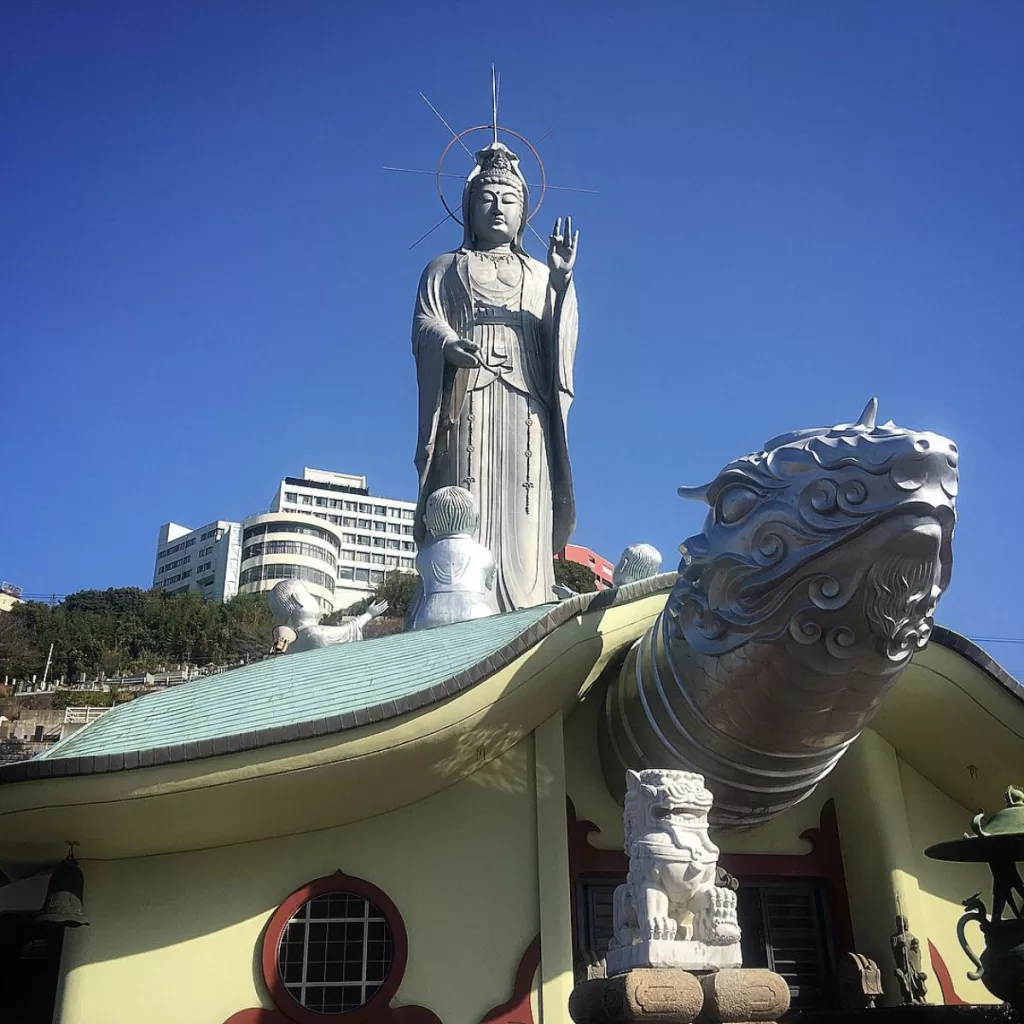
The Zen temple dates to 1628 and holds rare cultural artifacts plus Japan’s largest statue of the reclining Buddha at nearly 11 meters long.
Known for its picturesque surroundings and centuries-old traditions, Fukusai-ji Temple invites visitors to witness the beauty of its architecture, explore its serene gardens, and immerse themselves in a sense of peace and tranquility.
The temple’s main hall, with its imposing wooden structure and intricate details, is a sight to behold. The architecture is a harmonious blend of traditional Japanese design and Zen aesthetics, creating an atmosphere of simplicity and elegance. Inside, visitors can marvel at the ornate altar, delicate artwork, and serene ambiance that permeates the space. Fukusai-ji Temple provides a glimpse into the profound spirituality and devotion that is intrinsic to the practice of Zen Buddhism
19. Inasa-yama Park
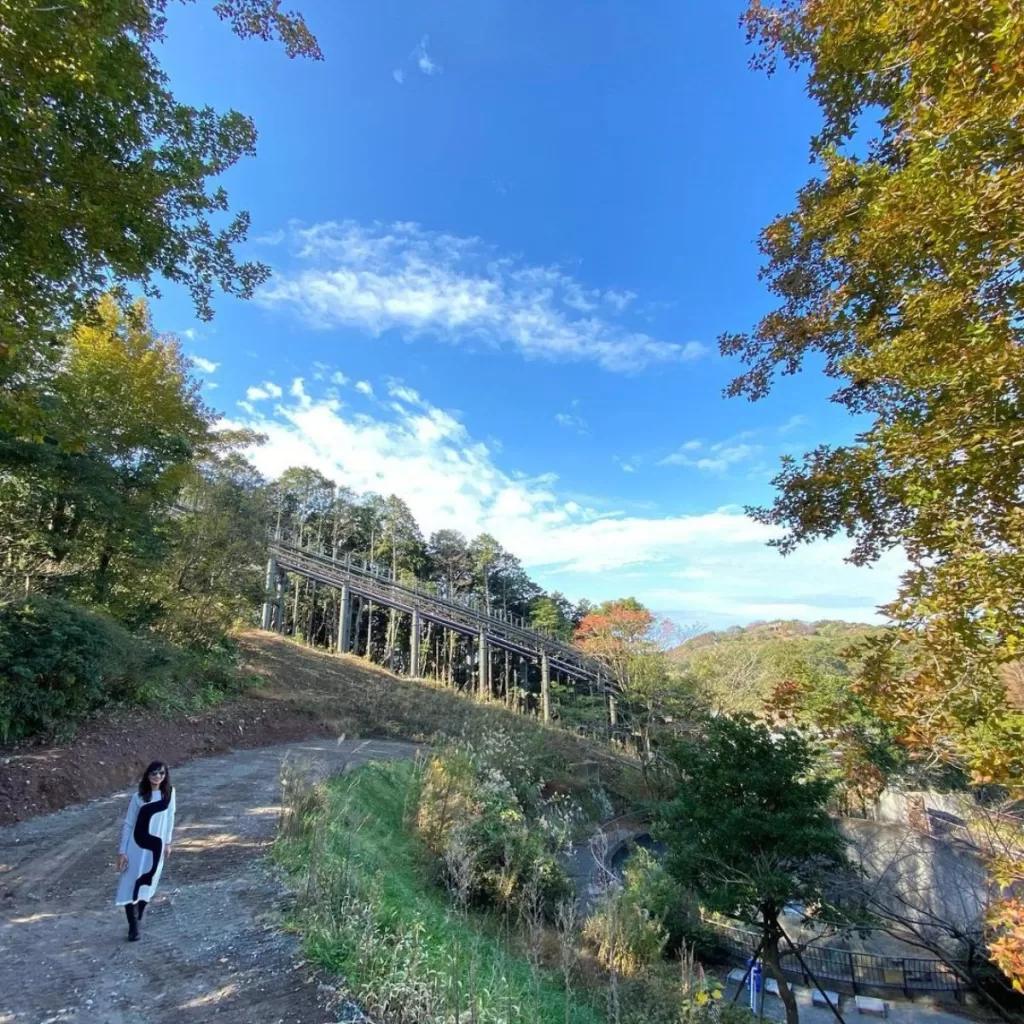
Perched atop Mount Inasa, Inasa-yama Park offers visitors breathtaking panoramic views of Nagasaki that are simply unparalleled. With its lush greenery, serene atmosphere, and awe-inspiring vistas, Inasa-yama Park is a must-visit destination for nature lovers and photography enthusiasts alike.
At an elevation of 333 meters, the park provides a stunning vantage point to take in the beauty of Nagasaki. Whether you visit during the daylight hours or in the evening, the vistas are equally mesmerizing. During the day, the panoramic views showcase the city’s unique geographical features, with Nagasaki Bay curving gracefully around the cityscape.
At night, the city transforms into a sea of twinkling lights, creating an enchanting night view that has earned Inasa-yama Park recognition as one of Japan’s top three nightscapes.
20. Shiroyama Elementary School Peace Museum
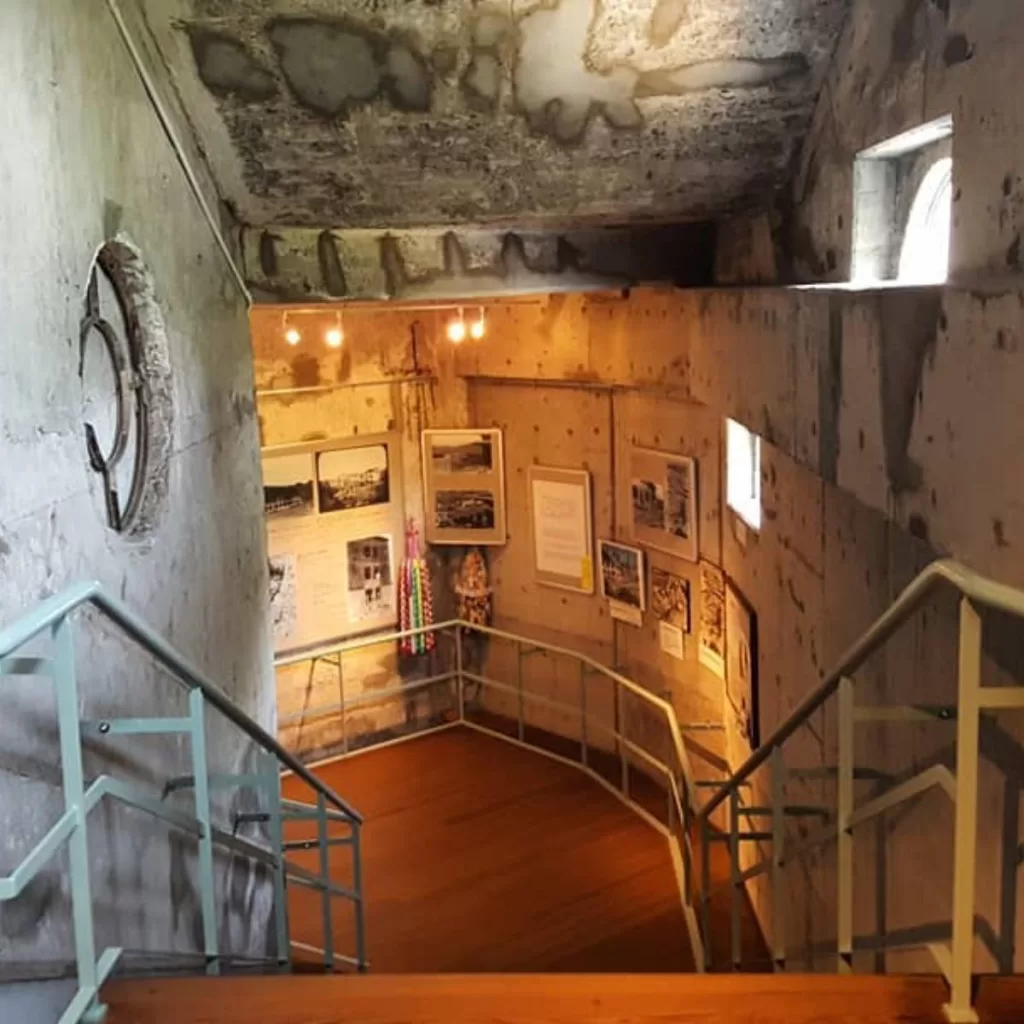
Once destroyed by the atomic blast, this former school now contains exhibits and memorials about the bombing. The remnants of the building serve as a warning.
Located near the hypocenter, the museum provides visitors with a deeply moving and educational experience that allows a glimpse into the tragic history of the city. It is a place that encourages reflection, memorialization, and a commitment to peace.
Through its exhibits, the museum tells the stories of the students, faculty, and local residents who were impacted by the tragedy. Personal artifacts, photographs, and firsthand accounts serve as powerful reminders of the human toll and the enduring trauma caused by the bombing.
21. Nagasaki Prefectural Art Museum
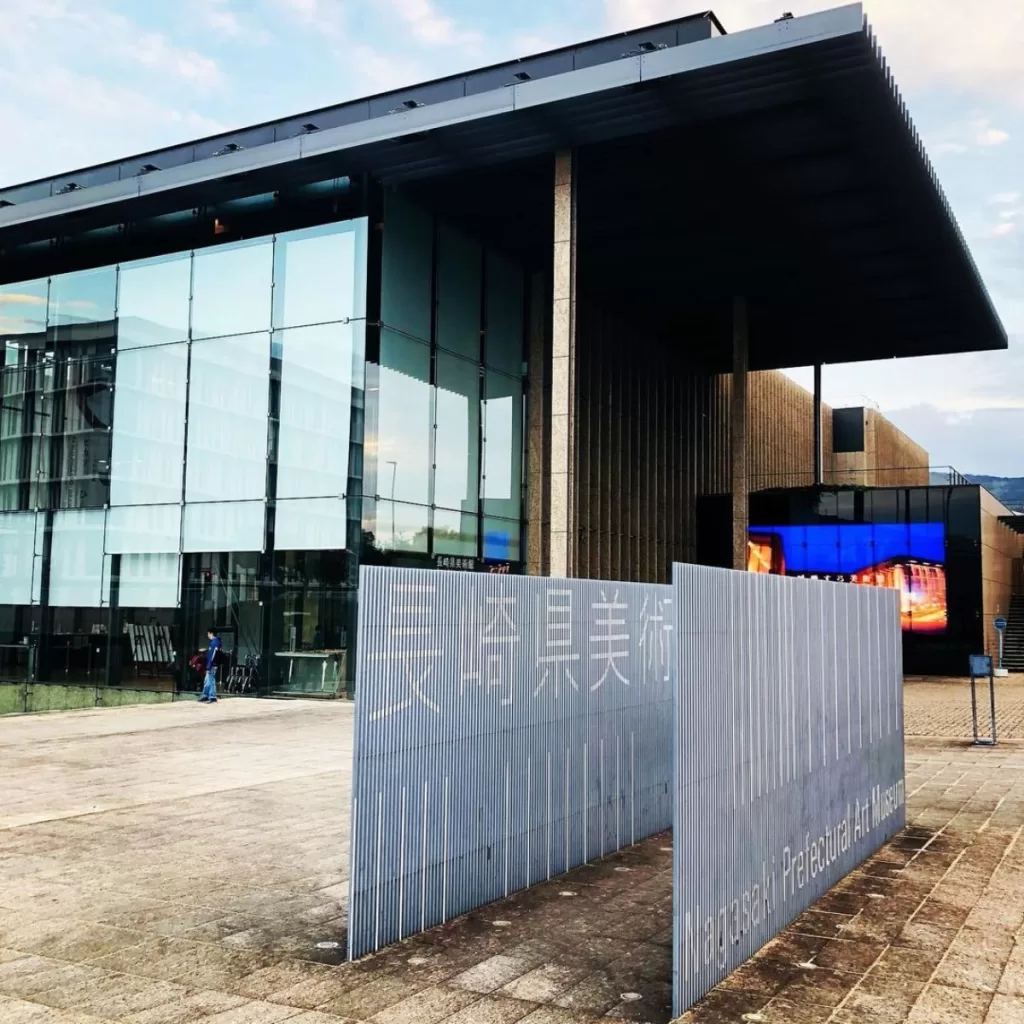
Located in the heart of Nagasaki, the museum offers a captivating journey through the realm of visual arts, allowing visitors to appreciate the creativity, skill, and cultural richness of both Japanese and international artists.
This art museum houses an impressive collection of Chinese and Japanese art, particularly Ming and Qing Chinese porcelain.
The museum’s iconic architectural design is another draw for visitors. Its modern and sleek aesthetic seamlessly blends with the surrounding natural landscape, creating an inviting and harmonious space. The spacious galleries, filled with natural light, provide a tranquil atmosphere that allows visitors to fully immerse themselves in the art on display.
22. One-Pillar Torii

The One-Pillar Torii in Nagasaki is a distinctive and visually striking landmark that holds great cultural significance. Located in the northern part of the city, this iconic torii gate stands as a symbol of spiritual devotion and serves as a testament to the enduring traditions of Japanese architecture.
Uniquely, this gate consists of just one large pillar. It stands over the water and makes for an iconic photo spot. Located at the entrance to the Suwa Shrine.
Visitors often come to the One-Pillar Torii to pay their respects, offer prayers, and seek blessings. The tranquil ambiance and serene environment around the torii create a sense of reverence, making it a peaceful spot for contemplation and reflection.
23. Hypocenter Cenotaph
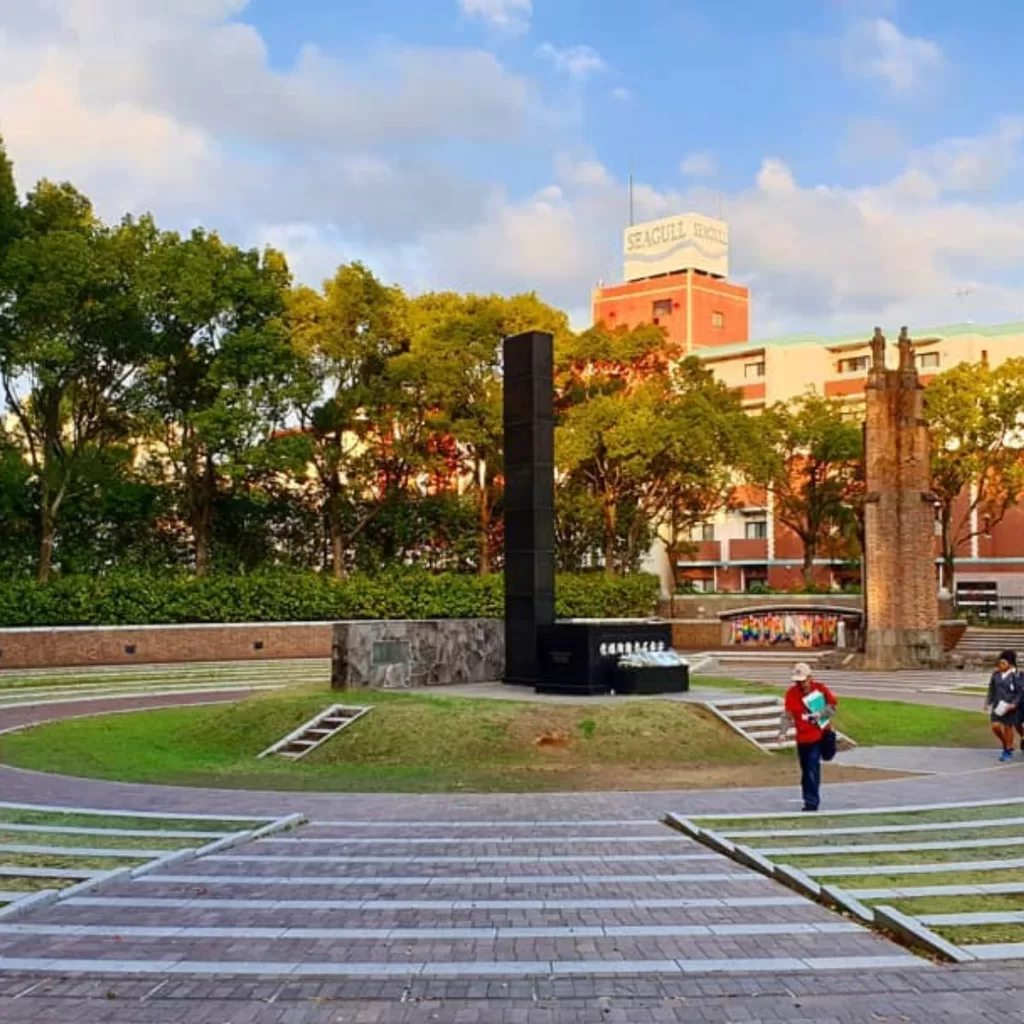
The atomic bomb exploded almost directly above this spot, 1500 meters above Nagasaki. The cenotaph honors the bomb victims with water gushing from a black granite column.
This poignant monument serves as a powerful reminder of the tragic events that unfolded during World War II and honors the lives lost in the devastating atomic bombing of Nagasaki.
Visiting the Hypocenter Cenotaph is a profoundly moving experience. The somber atmosphere and the weight of history surrounding the site create an atmosphere of reverence. People come here to reflect on the horrors of war, the devastating impact of nuclear weapons, and the importance of promoting peace and understanding among nations.
24. Peace Symbols Zone
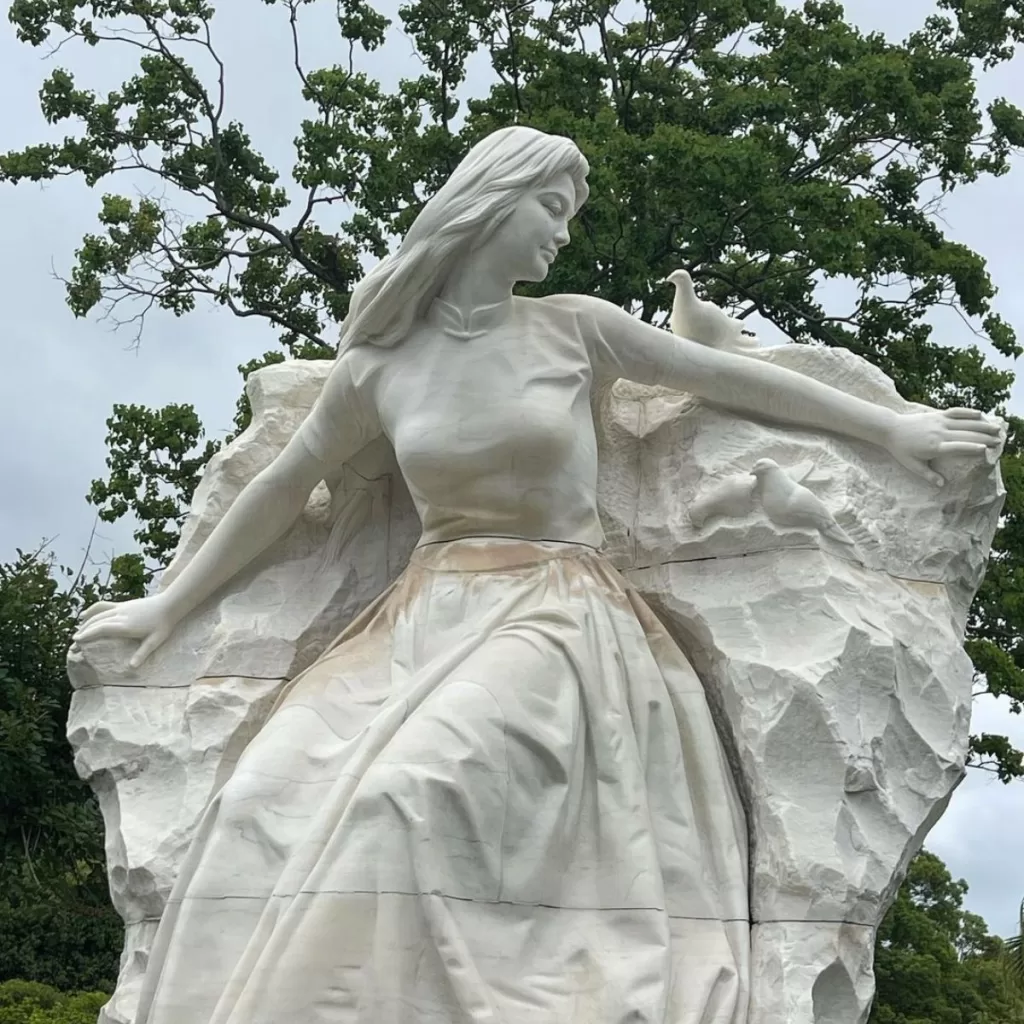
Located throughout the Peace Park, this collection of memorials was donated by various nations, including Chile, Hungary and Cuba.
The Peace Symbols Zone in Nagasaki is a place of immense significance, representing the city’s commitment to peace and hope for a better future. This area encompasses several monuments and symbols that serve as reminders of the devastating atomic bombing of Nagasaki and the importance of working towards a world free of nuclear weapons.
One of the prominent features of the Peace Symbols Zone is the Peace Statue, also known as the “Peace Park Statue.” This iconic statue is a symbol of Nagasaki’s desire for peace and the rejection of violence. Standing tall at over ten meters, the statue depicts a man outstretched with one arm pointing towards the sky, symbolizing both the suffering caused by the bombing and the hope for a peaceful future.
Another significant symbol in the Peace Symbols Zone is the Fountain of Prayer. This fountain represents the collective prayers of the people of Nagasaki for peace and the healing of wounds caused by war. Visitors often participate in a ritual of washing their hands and offering prayers at the fountain, reinforcing the message of harmony and unity.
25. Urakami Cathedral
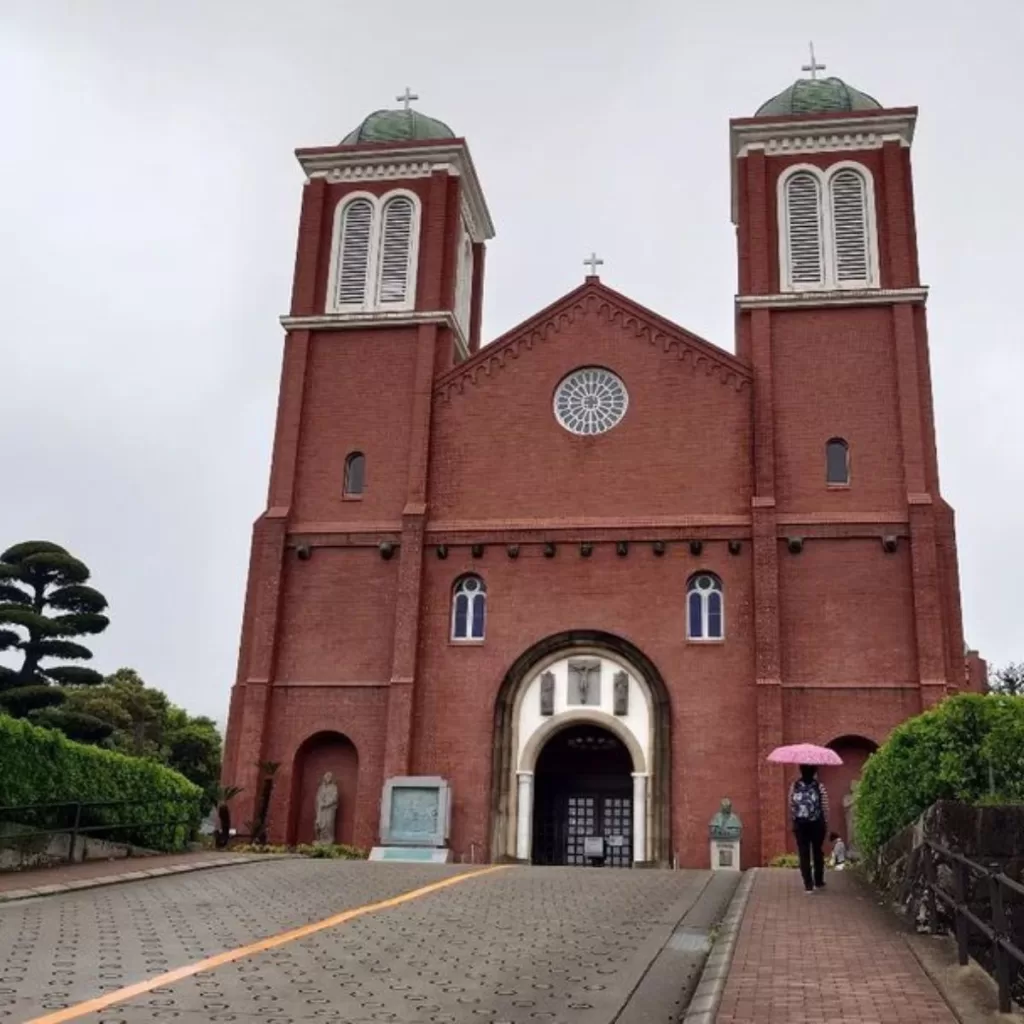
Urakami Cathedral, located in Nagasaki, is an iconic symbol of faith and resilience. Constructed in the late 19th century, it stood as the largest cathedral in East Asia at the time. Sadly, the cathedral was destroyed during the atomic bombing of Nagasaki in 1945.
Rebuilt in 1959, this Roman Catholic church has a modern concrete facade with distinctive bell towers. It was once the largest church in Asia.
The architecture of Urakami Cathedral is a beautiful blend of Western and Japanese influences. The exterior features elements of Gothic-style architecture, while the interior showcases Japanese craftsmanship and design. The stained glass windows, intricate woodwork, and ornate altars create a serene and awe-inspiring atmosphere. With its graceful spires and grand facade, the cathedral stands as an architectural marvel.
26. Hashima Island
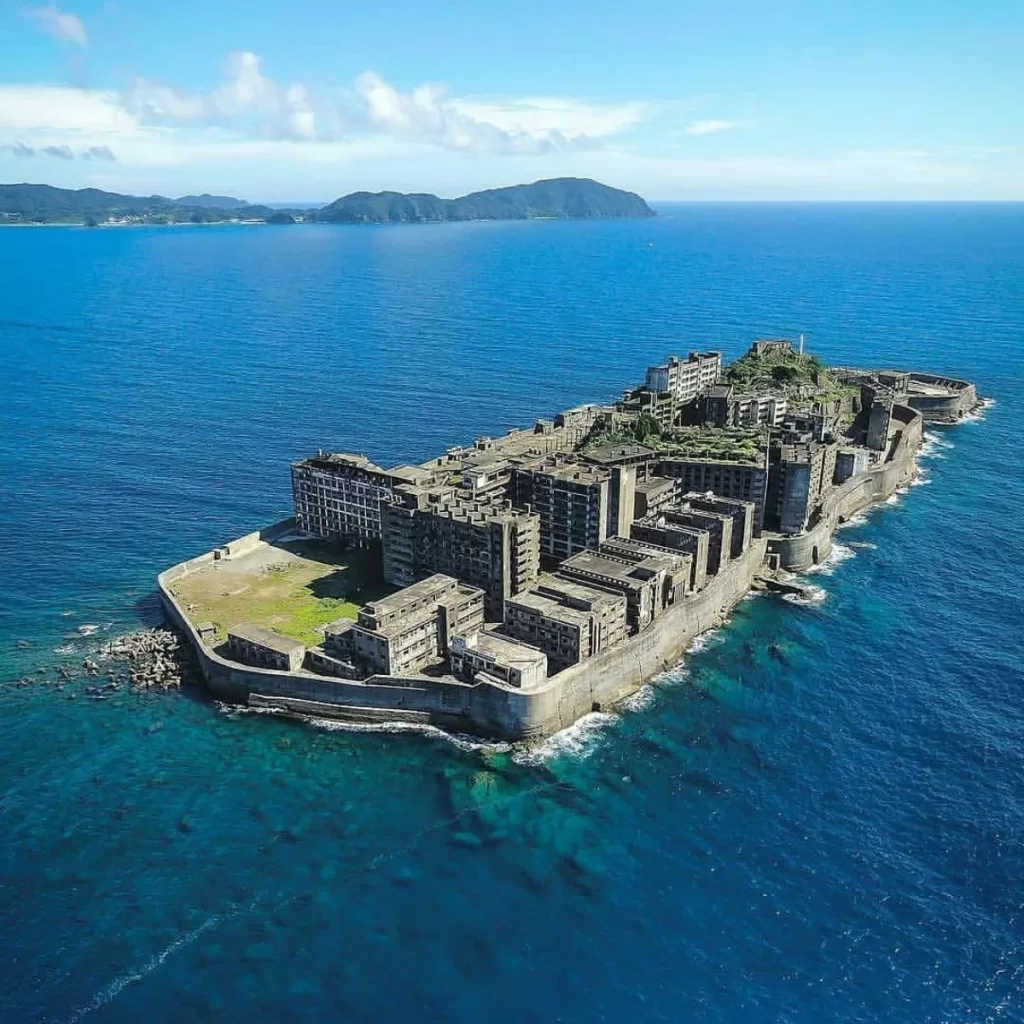
Nicknamed Gunkanjima or “Battleship Island”, this abandoned island off Nagasaki was once a coal mining facility. Once a bustling coal mining community, Hashima Island is now an intriguing ghost town, offering a fascinating glimpse into Japan’s industrial past. Its unique architecture, abandoned buildings, and eerie atmosphere make it a popular attraction for history enthusiasts and urban explorers.
The island’s most distinctive feature is its densely packed and towering concrete apartment buildings. These structures were built to accommodate the large population of the coal miners and their families who lived on the island during its peak in the early 20th century.
Over the years, nature has reclaimed parts of the island, contributing to its eerie charm. Visitors can explore the crumbling buildings, winding streets, and remnants of daily life, gaining insight into the living conditions and hardships endured by the island’s former residents.